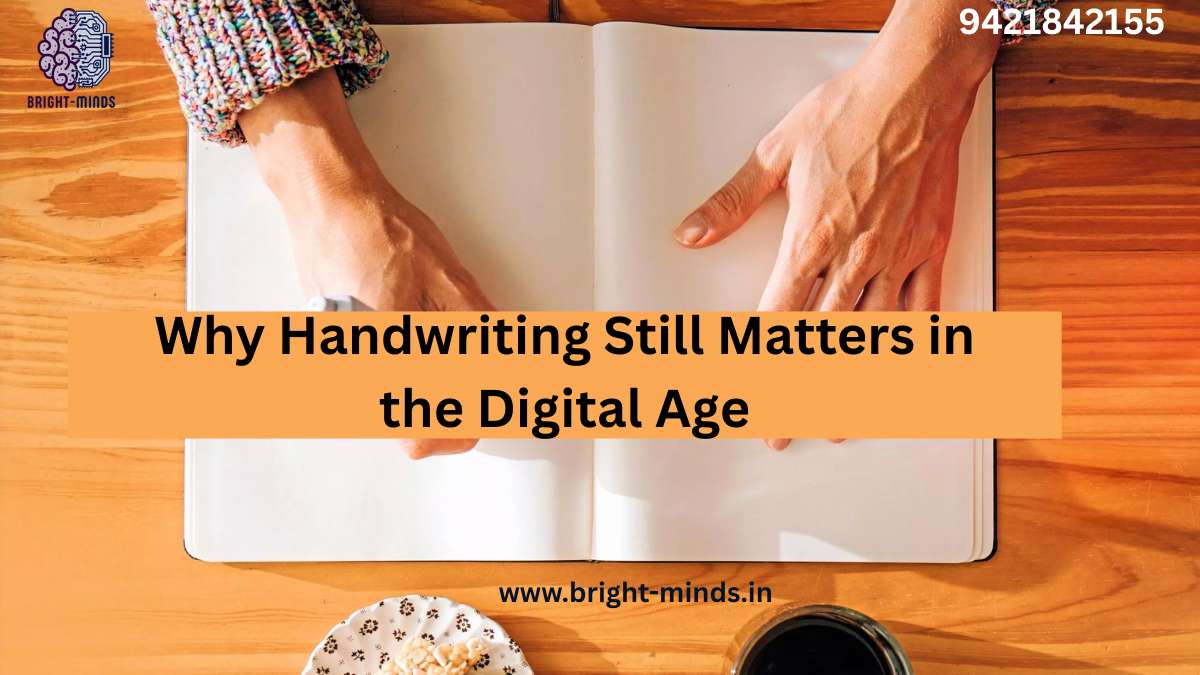In a world buzzing with screens, keyboards, and voice-to-text features, it’s easy to believe handwriting is on its way out. After all, we text instead of write letters, take notes on tablets, and sign documents with digital signatures.
But here’s the truth: handwriting still matters—more than most people realize.
Whether you’re a student, professional, or lifelong learner, picking up a pen might be the smartest thing you do today.
Let’s explore why handwriting remains a powerful tool in the digital age—and how it can boost learning, creativity, and even financial literacy.
🧠 The Brain-Boosting Benefits of Handwriting
Scientific studies show that writing by hand engages more areas of the brain than typing. It activates motor skills, memory, and comprehension—making it an incredible tool for learning and retention.
💡 Did you know?
Students who take handwritten notes retain more information than those who type.
When you write by hand:
- You slow down and process information deeply.
- Your brain builds stronger neural connections.
- You’re more likely to remember what you wrote.
This is true not only for kids in school—but also for adults in meetings, learners in online courses, and anyone journaling their financial goals.
🖋️ Handwriting in the Workplace: A Hidden Superpower
Think handwriting is just for school? Think again.
In professional settings, writing things down manually can:
- Enhance focus during meetings
- Spark creativity during brainstorming
- Help manage stress and reduce screen fatigue
- Improve personal goal-setting and productivity
💬 Example:
A marketing team might use digital tools for planning but still sketch campaign ideas and customer journeys on paper first—because thinking flows better by hand.
📉 Market Trends: Why Analog Is Making a Comeback
Despite the tech boom, the analog world is quietly trending again.
- Notebook and journal sales are rising. Brands like Moleskine, Leuchtturm1917, and even digital-paper hybrids like Rocketbook are booming.
- Handwriting-based tools like bullet journaling and habit tracking are going viral among professionals and students alike.
- EdTech platforms are integrating handwriting recognition (like Apple Pencil or stylus support) into their learning apps.
🧭 Insight: The market shows that people crave balance. Digital tools are convenient, but handwriting provides the mental clarity and focus they often lack.
✏️ Real-World Application: How Handwriting Builds Financial Literacy
Here’s something you might not expect—handwriting can improve your money habits.
When you physically write down your:
- Budget
- Spending logs
- Savings goals
- Financial affirmations
…you build stronger awareness and emotional connection to your finances. That simple act of writing makes your goals real—and helps you stay accountable.
💬 Relatable Example:
Imagine you’re trying to save for a house. Typing your goal in a budgeting app is good. But writing it on paper—”I will save ₹50,000 this year”—makes it feel personal. You’re more likely to commit.
🧘♀️ The Mindfulness Factor: Less Screen, More Sanity
Between emails, notifications, and meetings, we live in a constant state of digital overload.
Handwriting provides a rare moment of digital detox—a break your mind will thank you for.
🖋️ Journaling, morning pages, or simply writing a to-do list on paper can:
- Reduce stress
- Boost emotional well-being
- Improve focus
- Encourage reflection and goal-setting
Whether you’re mapping out a business idea or tracking your monthly spending, putting pen to paper can turn chaos into clarity.
✨ Practical Tips to Reintroduce Handwriting into Your Life
If it’s been a while since you wrote anything longer than a grocery list, don’t worry. Here’s how to get started:
✅ Start small – Write 5–10 minutes a day. Try journaling, a gratitude list, or setting daily intentions.
✅ Use a notebook you love – Pick one that feels good in your hands. Aesthetic matters more than you think.
✅ Make it a ritual – Light a candle, grab a coffee, and enjoy the process.
✅ Combine with digital tools – Use handwriting to brainstorm, then digitize for storage. Best of both worlds.
✅ Track goals manually – Use a written goal tracker for finances, wellness, or productivity.
📚 Handwriting Meets Technology: The Hybrid Future
You don’t have to choose between digital and analog.
Today’s tools merge both worlds:
- Digital notebooks (like Remarkable or Rocketbook) mimic handwriting while syncing with the cloud
- Stylus-based apps like Notability and GoodNotes make handwriting on tablets seamless
- OCR technology converts handwritten notes into editable text, preserving the personal touch
The future isn’t about replacing handwriting—it’s about redefining it.
🚀 Final Thoughts: Handwriting Is a Skill Worth Keeping
We live in a world where speed often wins—but not always. Handwriting offers something deeper:
✨ Slowness that leads to thoughtfulness
🧠 Physical engagement that fuels learning
📈 Analog rituals that support success
Whether you’re on a path toward professional growth, creative discovery, or financial literacy, handwriting is a surprisingly powerful ally.
You may also like this:-

